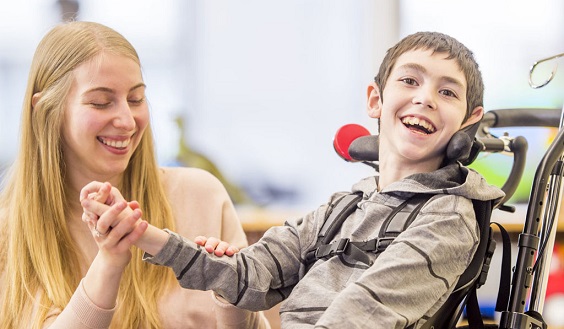Cerebral palsy is a neurological disorder that affects the motor function of the brain and body. It is a lifelong condition that can cause muscle stiffness, muscle weakness, impaired movement, and a lack of balance and coordination. It is most often caused by birth trauma, which can be the result of medical negligence or other factors.
Families affected by cerebral palsy have filed lawsuits for medical negligence that caused their child’s condition. These lawsuits are often brought against medical professionals or hospitals that have failed to provide proper care during the birthing process. In some cases, medical negligence has been proven, resulting in large settlements for the affected families.
These settlements can help cover the cost of care, therapy, and other treatments that may be needed to manage the condition. The emotional toll of a cerebral palsy diagnosis is also something that can never be forgotten or replaced, and these lawsuits can help to provide families with a sense of closure and justice.
Unfortunately, there are many medical misconceptions and myths that surround cerebral palsy, which can contribute to feelings of stigma, isolation, and inadequate medical care. It is important to dispel these myths and misconceptions to ensure that those with cerebral palsy receive the care they need and deserve learn from the experts.
All People With Cerebral Palsy Are Wheelchair-Bound
This is one of the most common misconceptions about cerebral palsy, and unfortunately, it is also one of the most damaging ones. The truth is, not all people with cerebral palsy are wheelchair-bound. In fact, the majority of people with CP do not need the use of a wheelchair. The severity of the effects of CP can vary greatly from person to person, and many people with mild cases of CP are able to walk, run, and even participate in sports.
For those with more severe cases of CP, the use of a wheelchair may be necessary. However, even for those people, a wheelchair does not necessarily mean that they are completely immobile. There are a variety of adaptive technologies like powered wheelchairs that allow people with CP to remain as mobile and independent as possible.
For those with cerebral palsy who are unable to walk, there are many mobility aides available other than wheelchairs. These include walkers, canes, crutches, and even motorized scooters. Each of these mobility aides offers its own unique benefits and can be customized to meet the specific needs of the individual.
Walkers are usually the first mobility aide used by those with cerebral palsy, as they provide the most stability and support. They are also relatively inexpensive and are easy to adjust for the user’s needs. Canes are another popular option, as they provide both balance and stability and are very lightweight. Crutches, while more difficult to use, offer more support than canes and are ideal for people with more severe cases of CP.
Motorized scooters are a popular choice for those with cerebral palsy who need more mobility than what a wheelchair or other mobility aide can provide. These scooters are battery-powered and can be customized to meet the individual’s needs. They are also relatively easy to operate and don’t require much strength to use.
Children With Cerebral Palsy Cannot Attend Traditional School
The myth that children with cerebral palsy cannot attend traditional school is simply not true. In fact, many children with cerebral palsy are able to attend traditional school and achieve success. With the help of an individualized education plan (IEP), teachers and parents can work together to ensure that the child receives the necessary accommodations and modifications to be successful.
Accommodations can range from small changes like extra time to complete tests to larger modifications like having a note taker or having a class modified to meet the student’s needs. Parents and teachers should work together to create an individualized education plan that meets the student’s unique needs. The plan should include accommodations and modifications that are tailored to the individual student, as well as strategies and supports that will help the student succeed in the classroom.
In addition to accommodations and modifications, there are many other supports available to students with cerebral palsy. Physical, occupational, and speech therapy can help students develop the skills they need to be successful in the classroom. Assistive technology can also be used to help the student participate in the classroom.
All People WIth Cerebral Palsy Are Non-Verbal
This is a common medical misconception and myth that all people with cerebral palsy are non-verbal. This is simply not true. While many people with cerebral palsy may have difficulty speaking or communicating due to the effects of their condition, there are many individuals with cerebral palsy who can communicate verbally.
It is important to understand that many people with cerebral palsy have difficulties with communication and speech due to the physical effects of their condition. Some may have difficulty forming words, while others may have difficulty controlling the muscles in their face and mouth, which can make it difficult to speak. Others may have difficulty understanding spoken language or may not be able to communicate due to cognitive impairments.
Despite these difficulties, there are still many people with cerebral palsy who are able to communicate verbally. With the help of speech therapists and adaptive technology, these individuals can learn to communicate effectively. For example, some individuals may use augmentative and alternative communication (AAC) devices, which can help them express their thoughts and needs. Other individuals may use sign language or picture boards to communicate with others.
While there are many misconceptions and myths about cerebral palsy, the truth is that everyone with CP is unique and has a different way of experiencing and dealing with their condition. It is important to be open-minded and understanding when it comes to CP and its effects on individuals. By learning more about cerebral palsy, we can help to dispel some of the myths and misconceptions that exist about this condition.
